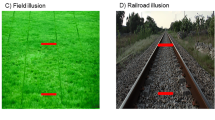Abstract.
Gestalt psychologists promulgated the principles of visual organization in the early twentieth century. These principles have been discussed and re-emphasized, and their importance and relevance to user interface design are understood. However, a limited number of systems represent and make adequate use of this knowledge in the form of a design tool that supports certain aspects of the user interface design process. The graphic design rules that these systems use are extremely rudimentary and often vastly oversimplified. Most of them have no concept of design basics such as visual balance or rhythm. In this paper, we attempt to synthesize the guidelines and empirical data related to the formatting of screen layouts into a well-defined model. Fourteen esthetic characteristics have been selected for the purpose. The results of our exercise suggest that these characteristics are important to prospective viewers.
Similar content being viewed by others
Author information
Authors and Affiliations
Additional information
Received 5 May 1999 / Revised 17 July 2000 / Accepted in revised form 27 November 2000
Rights and permissions
About this article
Cite this article
Ngo, D., Teo, L. & Byrne, J. Evaluating Interface Esthetics. Knowledge and Information Systems 4, 46–79 (2002). https://doi.org/10.1007/s10115-002-8193-6
Issue Date:
DOI: https://doi.org/10.1007/s10115-002-8193-6




